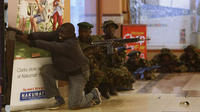-
Recession-related cost measures blamed for U.S. infrastructure lagging development
In an alarming fall, the United States is currently ranked 19th in the quality of its infrastructure, according to the World Economic Forum’s Global Competitiveness Report. Additionally, the American Society for Civil Engineers (ASCE) has given the country a D+ on its annual Infrastructure Report Card, arguing that $3.6 trillion is needed by 2020 for maintenance and upgrades.
-
-
DHS HQ: Doubts grow about trouble-plagued St. Elizabeths complex

DHS was supposed to move into its new, centralized headquarters on the grounds of the historic St. Elizabeths, in 2015, at a cost estimated to be about $3 billion. Today the project is $1.5 billion over budget, eleven years behind schedule, with thousands of DHS employees working at more than fifty scattered, expensively leased office buildings. Some lawmakers doubt whether the complex will ever be completed. A congressional aide familiar with sentiments on the Hill says: “It’s [the original St. Elizabeths complex plan] just not going to happen. The money doesn’t exist.”
-
-
Former DHS secretary: DHS has lost its way
Former DHS secretary Tom Ridge recently said that, “[DHS has] kind of lost [its] way…The focus – the primary focus – has been substantially diminished.” Others echo Ridge’s concern, noting that the department, the budget of which has more than doubled since its inception, from $29 billion in 2003 to $61 billion next year, has been suffering from mission creep.
-
-
Critics say $265 billion transportation bill insufficient
Transportation advocates criticize the lack of an increase in funding in the Senate’s $265 billion surface transportation bill recently unveiled. Senate leaders said the bill would replace the current transportation funding measure and maintain current funding levels, adjusted for inflation, for the next six years. The proposed bill includes $44 billion annually for road and transit projects, based on a Congressional Budget Office(CBO) estimate of how much funding will be needed to maintain current federal transit programs. The CBC has projected that Department of Transportation’s Highway Trust Fund will run out of money by August 2014 without congressional action.
-
-
Research reconfirms that public investment in scientific research promotes growth
New and independent research has reconfirmed and quantified some of the economic and societal benefits of public investment in scientific research. The report says that for every £1 spent by the U.K. government on R&D, private sector R&D output rises by 20p per year in perpetuity, by raising the level of the U.K. knowledge base.
-
-
South Carolina withdraws MOX lawsuit against DOE, NNSA
The state of South Carolina said Friday that it would not go ahead with its lawsuit against the Department of Energy and the National Nuclear Security Administration (NNSA) in support of the Savannah River Site’s Mixed Oxide (MOX) Fuel Fabrication Facility. The dismissal of the lawsuit follows an announcement last Tuesday by the DOE and NNSA that construction will continue on the MOX facility through the end of the fiscal year. The two agencies made it clear, though, that they still plan to mothball the plant.
-
-
DHS cancels acquisition of BioWatch’s Generation 3 technology
Owing to concerns about BioWatcheffectiveness and high cost, DHS has canceled plans to install an automated technology meant to speed the 24-hour operations of the program, the nation’s system for detecting a biological attack.ASeptember 2012 GAO report estimated that annual costs to operate the Generation 3 technology would be “about four times more” than the existing BioWatch system.
-
-
S.C. fights to keep costly plutonium processing project alive
The United States and Russia have agreed to dispose of thirty-four tons of weapon-grade plutonium each, an amount equal to 17,000 nuclear warheads. The United States budgeted $4 billion for a mixed-oxide fuel project, known as MOX, at the Savannah River Site, S.C., to process the plutonium, but construction costs have now reached $8 billion, and officials estimate the facility will cost about $30 billion over its operating years. DOE has suspended the MOX project and is looking for alternative plutonium processing methods. South Carolina has sued the federal government, arguing that since Congress has authorized the funds for MOX, the administration must spend the money.
-
-
Helping Kansas counties deal with deficient bridges
Seventy-eight of the 105 counties in the state of Kansas have bridges on low-volume rural roads in dire need of repair, replacement, or removal. With an estimated cost of $150,000 per bridge — and nearly 1,000 bridges across the state in the structurally deficient or functionally obsolete categories — replacement bridges are an expensive proposition. A new study offers a way to determine which bridges should be repaired, and which should be closed.
-
-
Red Team’s concepts, approach gain support
Headed by Thom Mason, director of Oak Ridge National Laboratory (ORNL), Red Team aims to modernize the uranium processing procedure on a budget of $4.2 billion to $6.5 billion. Even before Red Teamdelivered its report on alternatives to the expensive Uranium Processing Facility (UPF) at the Y-12 nuclear weapons plant by the 15 April 2014 deadline, the group of experts, who come from different disciplines, had already gained support among energy officials and some members of Congress.
-
-
Kenyan security forces hobbled by lack of funds

Kenya may be facing a heightened risk from regional terrorism, but security forces in Kenya are hobbled by glaring underfunding due to government corruption and mismanagement. The Anti-Terror Police Unit in Nairobi, the main force set up to combat terrorist acts, has only $2,205 for its operations during the first quarter of the year — coming to just $735 for March. In comparison, an average parliamentary salary is around $45,000 for the same period.
-
-
Budget proposal cuts funds for nuclear nonproliferation programs
The White House’s fiscal 2015 budget proposal includes more than $220 million in cuts for nuclear security initiatives such as the International Material Protection and Cooperationprogram, which aims to secure and eliminate vulnerable nuclear weapons and materials, and the Global Threat Reduction Initiative, which supports the Energy Department’s efforts to prevent terrorists from acquiring nuclear and radiological materials that could be used in weapons of mass destruction. The administration says that 54 percent of the reduction in the administration’s nonproliferation budget request can be accounted for by the decision to halt the South Carolina Mixed Oxide Fuel Fabrication Facility(MOX), which would have convert weapons-grade plutonium into nuclear reactor fuel, because the project proved to be too costly.
-
-
$38.2 billion for DHS in FY2015 budget proposal; $1.25 billion in cyber funding
The administration’s FY 2015 budget proposal, submitted to Congress on Tuesday, requests $38.2 billion in non-disaster funding for DHS, which is nearly a 3 percent reduction relative to FY 2014 allocation, but about the same as FY 2013. The proposal asks for about $1.25 billion – or 3 percent of the requested $38.2 billion – for cyber security funding, up from the $792 million in cybersecurity funding Congress approved for DHS in FY 2014. Of the $1.3 billion, about $1 billion will go for cyber initiatives, including funding for a new voluntary program for critical infrastructure companies and money to bolster civilian network security.
-
-
Proposed 2015 budget cuts funding for nuclear nonproliferation programs
The Obama administration 2015 budget proposal shows that the administration will spend less on nuclear nonproliferation initiatives in 2015 than it would in 2014. The budget of the National Nuclear Security Administration (NNSA), the agency responsible for various nuclear weapons and nuclear nonproliferation programs, will be cut by 20 percent, from the $1.9 billon Congress approved for fiscal 2014 — which in turn was a $289 million cut from fiscal 2013 levels — to $1.6 billion in 2015.
-
-
State lawmakers question Cuomo proposal for a homeland security college
Governor Andrew Cuomo last month earmarked $15 million in his state budget proposal for what he called “the nation’s first college dedicated solely to emergency preparedness and homeland security.” State lawmakers are generally in support of investing more money in preparing the state for natural and man-made disasters, but some question whether a new college for homeland security is the answer.
-
More headlines
The long view
A Brief History of Federal Funding for Basic Science
Biomedical science in the United States is at a crossroads. For 75 years, the federal government has partnered with academic institutions, fueling discoveries that have transformed medicine and saved lives. Recent moves by the Trump administration — including funding cuts and proposed changes to how research support is allocated — now threaten this legacy.
